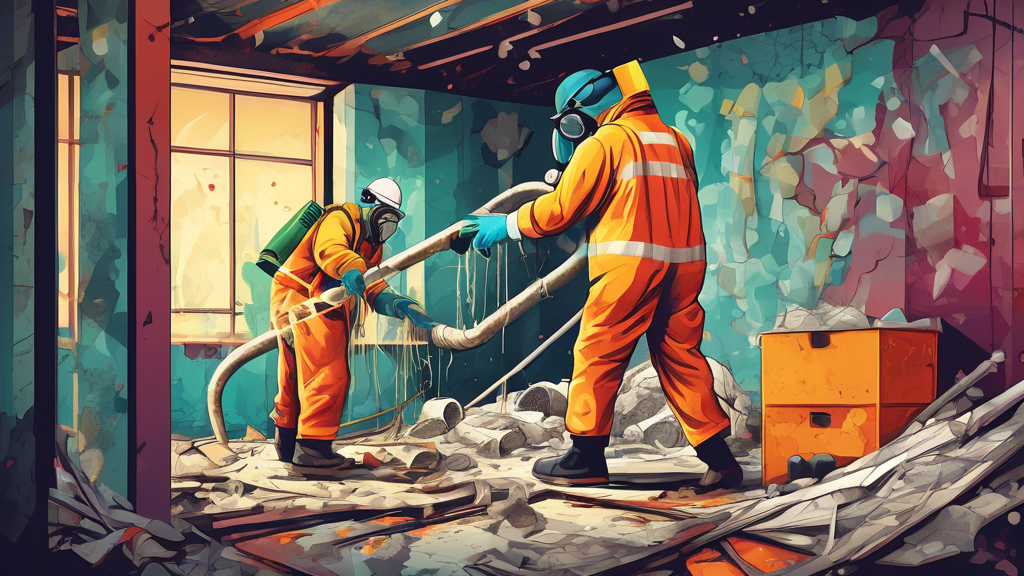

Understanding Asbestos Presence
Asbestos, a group of naturally occurring fibrous minerals, was once hailed for its heat resistance, strength, and insulating properties. These qualities made it a popular material in the construction, automotive, and manufacturing industries for much of the 20th century. However, the health risks associated with asbestos exposure have since relegated it to a dangerous substance with stringent regulations governing its use and removal.
The Prevalence of Asbestos in Construction
Asbestos can be found in many older buildings, particularly those constructed between the 1940s and the late 1980s. Common construction materials containing asbestos include:
- Insulation materials: Pipe insulation, attic insulation, and boiler insulation often contained asbestos due to its thermal properties.
- Flooring: Vinyl floor tiles, sheet flooring, and adhesives used in installation sometimes incorporated asbestos for added durability.
- Roofing and siding: Many roofing shingles, siding materials, and trim were manufactured with asbestos to enhance weather resistance.
- Ceiling materials: Acoustic ceiling tiles and spray-on ceiling coatings (commonly known as popcorn ceilings) frequently contained asbestos.
The extensive use of asbestos in these applications means that many structures still harbor this hazardous material, posing potential risks to occupants during renovations, demolitions, or natural disasters.
Health Risks Associated with Asbestos Exposure
Exposure to asbestos fibers can cause serious health problems. When materials containing asbestos are disturbed, tiny fibers can become airborne and be inhaled into the lungs. This can lead to several diseases, including:
- Asbestosis: A chronic lung condition characterized by scarring of lung tissue, leading to breathing difficulties and decreased lung function. Symptoms may take decades to appear.
- Lung cancer: Inhalation of asbestos fibers significantly increases the risk of developing lung cancer, especially among smokers.
- Mesothelioma: A rare but aggressive cancer affecting the lining of the lungs, chest cavity, or abdomen. Mesothelioma is almost exclusively linked to asbestos exposure.
- Other cancers: In addition to lung cancer and mesothelioma, asbestos exposure has been linked to cancers of the larynx, ovaries, and gastrointestinal tract.
These health risks underscore the importance of handling asbestos-containing materials with caution and ensuring proper safety measures are in place during any work that may disturb them.
Identifying Asbestos in Buildings
Determining whether a building contains asbestos requires careful inspection and analysis by qualified professionals. Here are some key steps involved in identifying asbestos presence:
- Visual inspection: A thorough examination of the building to identify potential asbestos-containing materials (ACMs). However, visual inspection alone is not enough to confirm asbestos presence.
- Sampling and testing: Small samples of suspected ACMs must be collected and analyzed in a laboratory using specialized techniques such as polarized light microscopy (PLM) or transmission electron microscopy (TEM).
- Asbestos surveys: Comprehensive surveys, including an Asbestos Management Survey or an Asbestos Refurbishment and Demolition Survey, are conducted to assess the extent and condition of asbestos in a building.
These steps are crucial for ensuring an accurate assessment and planning appropriate management or removal strategies.
Asbestos Management and Removal
Managing asbestos in buildings involves a combination of monitoring, maintaining, and, if necessary, safely removing the material. Key aspects of asbestos management include:
- Risk assessment: Evaluating the condition of ACMs and their potential for disturbance to determine the level of risk they pose.
- Management plans: Developing and maintaining an asbestos management plan that outlines procedures for monitoring, maintenance, and, if needed, removal of ACMs.
- Training and awareness: Ensuring that building occupants and maintenance personnel are aware of the presence of asbestos and trained on how to avoid disturbing it.
- Professional removal: Hiring licensed asbestos abatement professionals to conduct removal or remediation work. They use specialized equipment and follow strict protocols to prevent fiber release and ensure safe disposal.
Effective management and, where necessary, safe removal of asbestos are critical to safeguarding public health and maintaining regulatory compliance.
Regulations Governing Asbestos
Numerous regulations have been established to control the use, handling, and disposal of asbestos. In the United States, key regulatory bodies include:
- Environmental Protection Agency (EPA): The EPA enforces regulations under the Clean Air Act and Toxic Substances Control Act (TSCA), including standards for asbestos in schools and other public buildings.
- Occupational Safety and Health Administration (OSHA): OSHA sets workplace safety standards to protect employees from asbestos exposure, including permissible exposure limits and required protective measures.
- State and local regulations: Many states and municipalities have additional regulations governing asbestos, including licensing requirements for abatement professionals and specific disposal protocols.
Adherence to these regulations is essential for mitigating the risks associated with asbestos and protecting the health of workers and the general public.
Conclusion
Asbestos presence in buildings remains a significant health concern due to its widespread use in the past and the serious health risks posed by exposure. Identifying, managing, and, if necessary, removing asbestos-containing materials are vital steps in protecting both current and future occupants of affected buildings. Through diligent adherence to safety protocols and regulatory requirements, the hazards associated with asbestos can be effectively managed and minimized.







